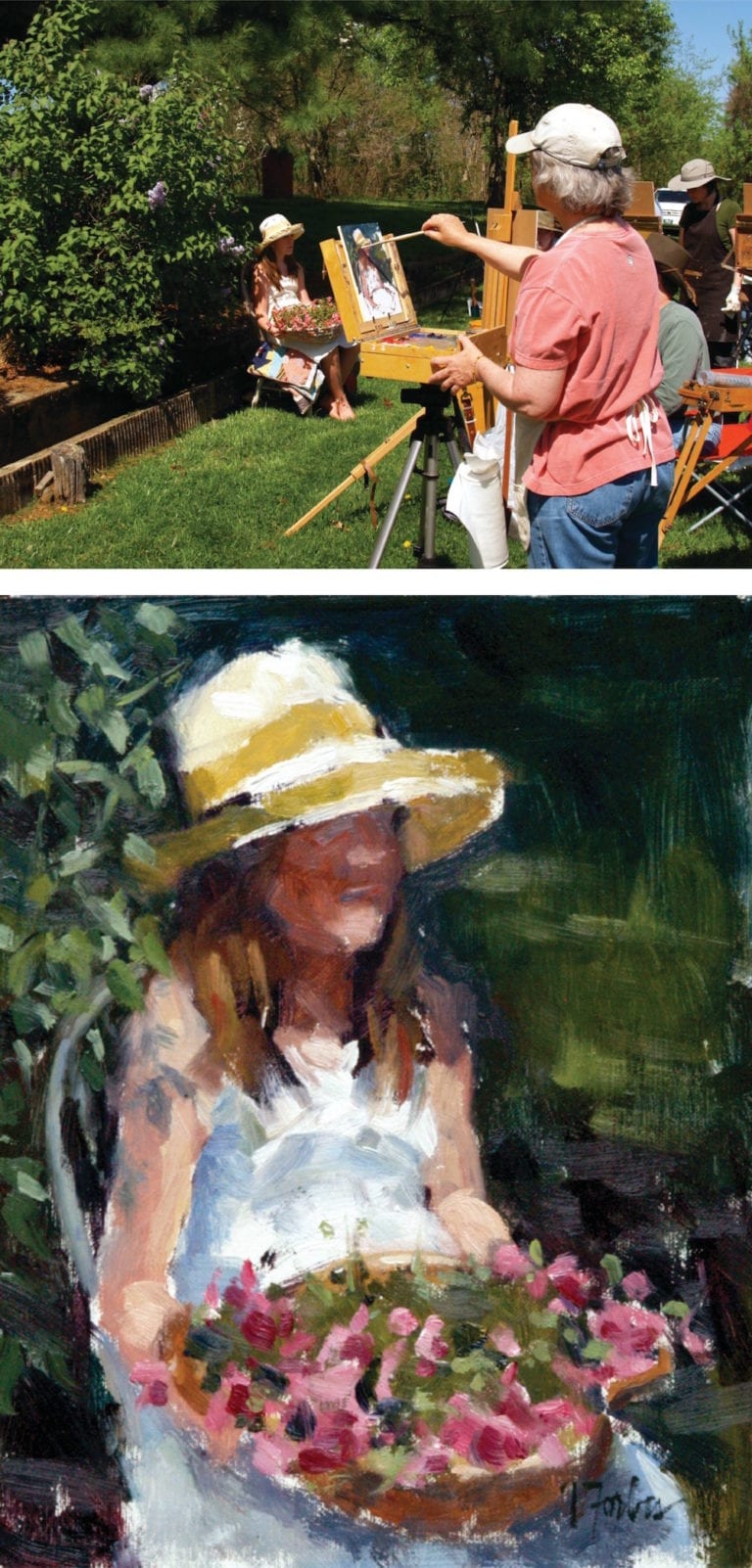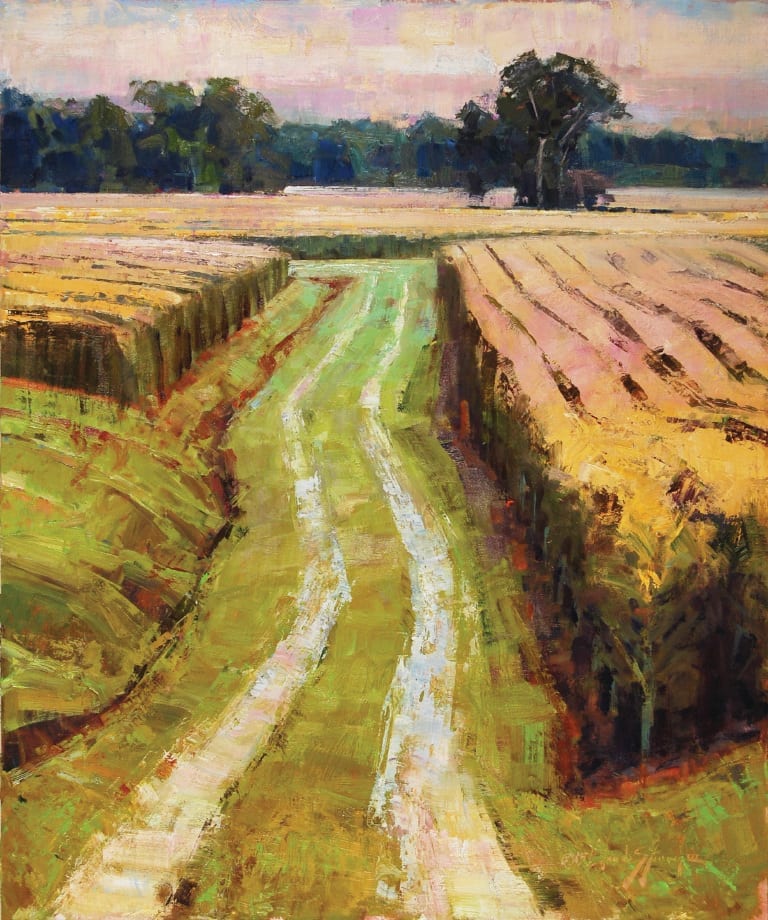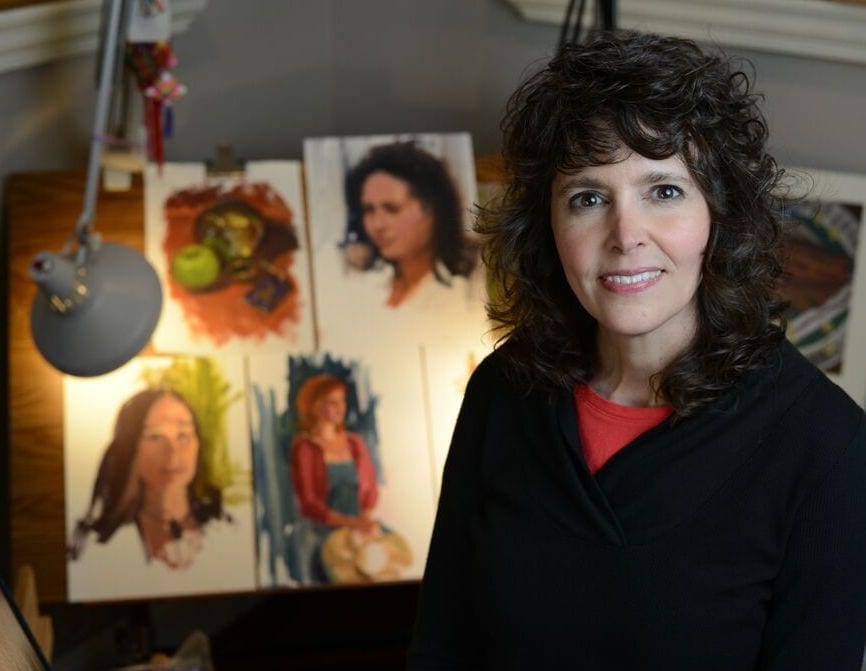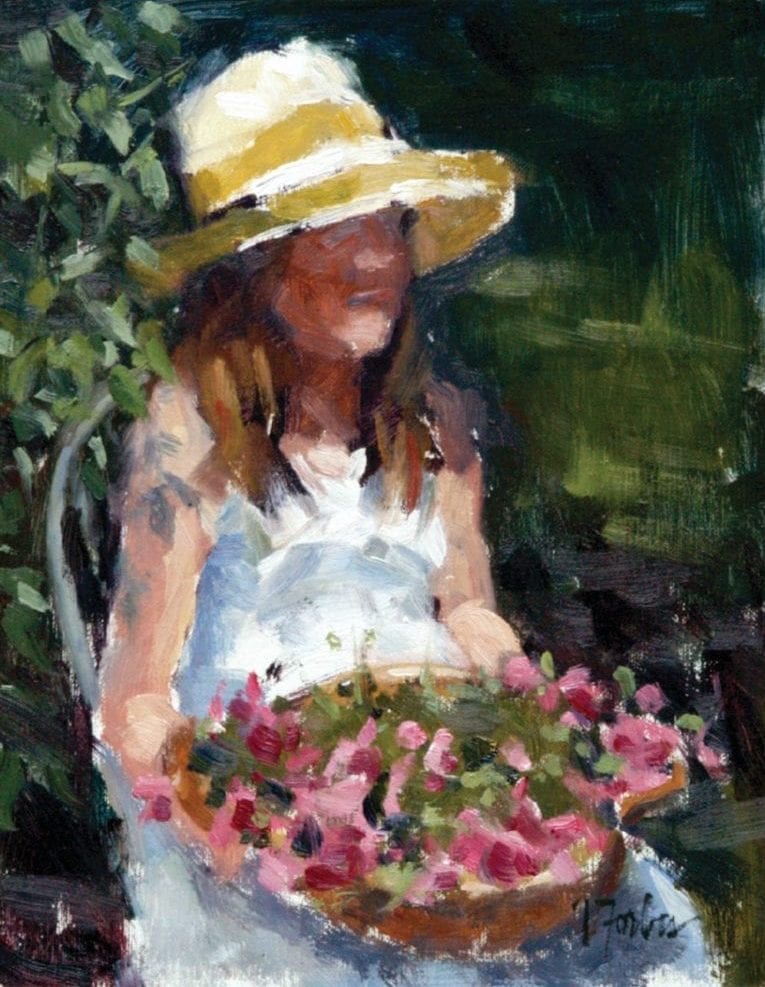Plein Air Painting – The French Technique Taking Over the Industry
A plein air painting is more than just a painting. It’s a moment in time. Plein air is a French term that translates to painting out-of-doors.
When Trey Finney reflects on his plein air painting “Tuckahoe Produce,” he’s immediately taken back to the scene of a bustling eastern Maryland farmer’s market. Shoppers pick through overflowing baskets of fragrant, fresh fruits and vegetables. Curious onlookers peer over Finney’s shoulder as he works to capture the moment with oil paints and brush before the light shifts.

Isabel Forbes paints a portrait of a 14-year-old flower girl named Maya in 2010, while at the Plein-Air Invitational in Germanton, N.C.
What is plein air painting?
In plein air painting, artists paint from firsthand observation of real-life: a farmer’s market, a coastal scene or a grove of trees. Compared to studio work, it’s a quick piece. Shadows shift and light changes drastically in just a few short hours, but the result is a true imprint of what the artist’s eye sees in that moment.
Plein air’s popularity has grown exponentially in recent years for artists seeking to hone their craft by getting back to basics and for art consumers looking for that immediate expression of pure art. Plein air groups are popping up across the nation and world, and regularly organized events are making plein air painting accessible to both artists and the public. Finney is a member of Plein Air Painters of the Southeast.
“If you look at traditional art — Renaissance art, Impressionist art, anything that’s more traditional — all of those artists believed in working on something from life,” Finney said. “You’re drawing, atmosphere, color, composition, and you have to focus to get it done in a relatively short period of time.”
What are the rules?
The plein air movement pays homage to a historic tradition practiced by many of the painting greats: Rembrandt, Monet and Renoir, to name a few. Plein air’s popularity grew with the invention of tubed paints and portable easels in the mid-19th century. Today, entire studios are consolidated into a backpack filled with only the necessities: tripod, easel, paints, brushes, panels, umbrella, hat and sunscreen. “Just jump in your car,” Finney, a Spartanburg resident, said.
Charleston artist Dee Beard Dean founded Plein Air Painters of the Southeast (PAP-SE) in 2001. The juried organization includes 40 artists — and growing — living and working in the Southeast. Member artists are invited to participate in shows and week-long retreats, where artists offer demonstrations and workshops, and the public is invited to watch the creative process in action.
See Plein Air Nearby
“Plein air painting has definitely increased in popularity,” Dean said. “Many municipalities all over the country are having plein air events, which has made the movement even more popular. The camaraderie of the painters at these events is also a positive factor.”
Whether at an organized plein air event or an impromptu sketch not far from home, Spartanburg artist Isabel Forbes sees plein air painting as critical to sharpening her skills. She often uses plein air sketches as a guide to infuse more life into the larger, more detailed studio pieces.
“You’ve stood there for a couple of hours and experienced it,” Forbes said. “You’ve heard the birds. Swatted mosquitoes. Have sunburn. So now when you’re in front of this big piece, you have this moment in time you’ve experienced.”

Finney painted this scene of a dirt road meandering through a cornfield in Maryland’s Eastern Shore while on location, adding details when he returned to his studio. (“Left Turn Only,” 24×20.)
Forbes regularly takes her pochade box — a portable easel — camping and is planning a plein air trip to Arizona in the spring. A coastal exhibit on display in Forbes’ Kennedy Street studio includes “Palm Forest,” a plein air piece painted on a trip to Cumberland Island. Looking at the painting, Forbes remembers the smell of dried palms and pluff mud and the flock of ibis that flew by.
“It’s like being there again,” Forbes said. “There’s something about having that energy.”
Finney and his wife, fellow artist Christine Lawrence, have traveled across the nation and world to experience and work in plein air: Italy, California, Montana, Colorado, Arizona and locations up and down America’s East Coast. They’ve been to plein air conventions with hundreds of painters and more intimate events with just 30-or-so artists.
“We always say how the photographs are so deceiving as to the colors that are really out there,” Lawrence said. “You’re very much in the moment. I’ve always said that I’m a studio painter. But plein air is invaluable. You have to go outside to make your studio paintings better.”
Finney’s plein air sketch of the flea market, and other works by Finney and Lawrence are on display at Smithworks Jewelers on Kennedy Street in Spartanburg. The resulting studio piece, “Tuckahoe Produce,” is in an Alabama gallery. Both tell a story that extends beyond what could have been accomplished by painting from a photograph or other image.
“With plein air,” Finney said, “you use all of your senses.
Editor’s Note: Christine Lawrence, below, passed away on Jan. 5, 2016 at the age of 47, leaving behind friends and family. Her artistic legacy includes hundreds of paintings and sketches, as well as animation credits on Disney films such as “The Lion King” and “Beauty and the Beast.”

This article was first published on December 22, 2020
By Lee G. Healy
Photographs by Michael Griffin Jr. / Provided by artists

